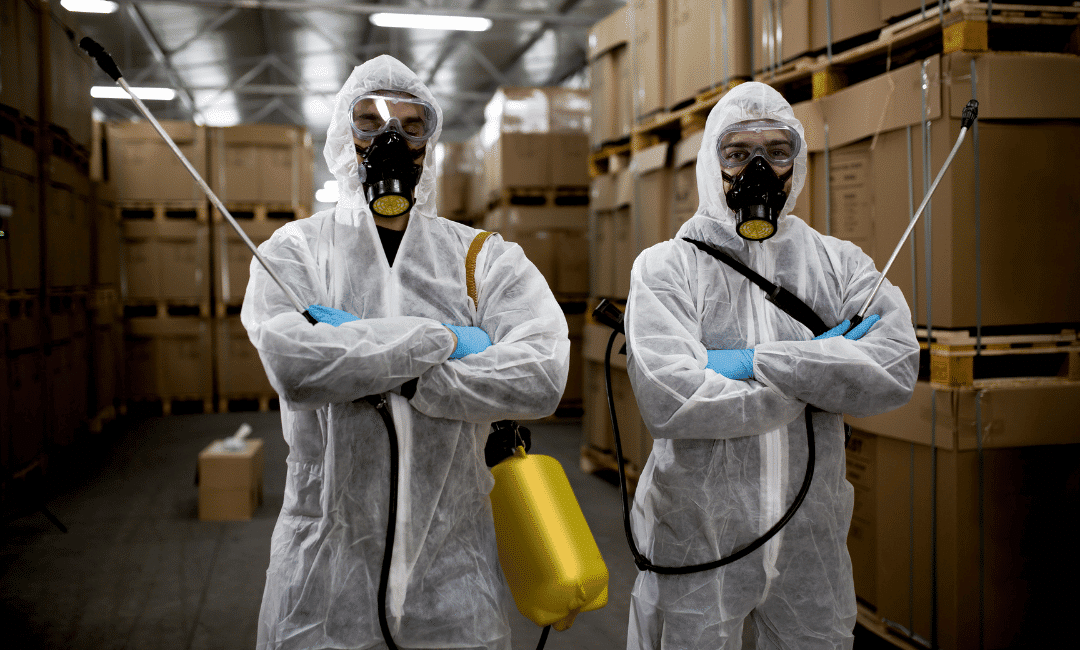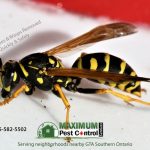
A Comprehensive Guide to Wasp Removal Service for Residential and Commercial Business
There’s no denying that nature’s creatures are fascinating and play essential roles in our ecosystem. However, when a wasp colony decides to set up a shop in your home or business, fascination quickly turns into fear and frustration. The presence of these stinging insect nests can pose significant risks, ranging from painful stings to structural damage. However no need to worry, Maximum pest control services always here to assist you with all types of pest control services.
Whether you’re a homeowner dealing with a persistent buzzing in your attic or a business owner noticing an alarming number of these unwanted guests, this guide is your go-to resource. Arm yourself with knowledge, make informed decisions, and reclaim your peace of mind. Read on, and let’s win the war against wasps together!
Introduction to Wasps
Wasps belong to the Hymenoptera order and the Vespidae family. Common types of wasp species include paper wasps, yellow jackets, and hornets. They vary in dimension between half an inches to over an inch in size range. Their colonies are usually found in sheltered areas like wall cavities, roof spaces, or in soil banks. A single nest can house thousands of wasps, which can pose a threat to people and property.
Risks of Wasp Infestations
A wasp infestation can present several risks, such as:
● Stings: Wasps can be aggressive if they feel threatened. Their sting can cause painful reactions, and in rare cases, serious allergic reactions.
● Damage to Property: Certain types of wasps, like carpenter wasps, can cause property damage by burrowing into wood structures.
● Disturbance to Everyday Life: Large wasp populations can create a nuisance, affecting outdoor activities and indoor tranquility.
● Food Contamination: Wasps are attracted to food, particularly sweets and proteins. In businesses like restaurants or cafes, a wasp infestation can pose significant risks of food contamination.
● Financial Damage: Particularly in commercial settings, a wasp infestation can lead to financial consequences. If customers see wasps in a business, they might leave and not return. In severe cases, businesses may have to close temporarily for wasp control, leading to lost revenue.
● Re-infestation: Wasps are likely to return to a previously established nest location, meaning that once you have an infestation, you might experience recurring problems if not dealt with correctly.
● Risk to Pets: Wasps can pose a threat to pets that may unknowingly disturb a nest or try to catch wasps. Stings can be as hazardous to animals as they are to us humans, could results significant reactions especially with elder age people.
● Structural Risks: Some types of wasps, like the European hornet, can gnaw through drywall and other materials, potentially causing structural damage over time. This could lead to costly repairs if left unchecked.
Identifying a Wasp Nest Infestation
● Finding Nests: Look for nests in sheltered spots like eaves, attics, garages, or under decks. Wasps build their nests from chewed wood pulp, giving them a papery appearance. The size and shape can vary, but they often look like a grey or brown lump, sometimes with an obvious opening.
● Hearing Buzzing Sounds: You might hear buzzing sounds from within your walls or attic, indicating the presence of a nest inside your home.
● Noticing an Increased Wasp Presence: Seeing an increasing number of stinging insects around your property can indicate a nearby nest.
Wasp Removal: DIY vs. Professional Services of Pest Control
Wasp removal can be a dangerous task due to the risk of stings and potential allergic reactions. While small nests can sometimes be handled by homeowners using retail products, larger infestations should be dealt with by professionals.
DIY Removal: This typically involves using sprays or powders that can be purchased from retail stores. Always follow the manufacturer’s instructions and precautions. Approach the nest slowly and calmly, preferably at night when flying insects are less active. Ensure that to wear safety protective garments, including strong gloves and a cover face guard. Keep in mind, try to do it on your own approach can truly be unsafe and dangerous and not always reliable when not done by professional trained exterminator.
Professional Services: Professionals have the knowledge training, protective gear, and specialized equipment to remove wasp nests safely and effectively from your house or business. They can also provide advice and treatment for preventing future problems.
Selecting a Wasp Removal Service
When selecting a professional solitary wasp’s removal service, consider the following factors:
● Experience and Reputation: Look for a company with a good reputation and considerable experience in wasp nest removal. Check reviews and ratings online, and ask for references.
● Licensing and Insurance: Ensure that the company is licensed to perform wasp nest control services in your state. They should also have liability insurance to cover any potential damages that could occur during the removal process.
● Services Offered: Confirm that they offer specific wasp removal services. Some companies might specialize in rodents or termites but not have much experience with harmful insects.
● Price and Guarantee: Get a quote and understand exactly what services are included. Some companies offer a guarantee on their work, meaning they will return at no extra cost if the first attempt at removal is unsuccessful.
The Wasp Removal Process
Professional wasp removal generally involves the following steps:
1. Inspection: The technician will inspect your property to locate all wasp nests.
2. Identification: The technician will identify the species of wasp to determine the best course of action.
3. Treatment Plan: Based on the inspection and identification, the technician will develop a treatment plan. This can involve pesticide application, nest removal, or a combination of both.
4. Execution: The technician will carry out the treatment plan. This usually involves wearing protective equipment to prevent stings.
5. Follow-up: Many companies offer follow-up services to ensure the infestation is fully eradicated and provide advice for preventing future infestations.
Preventing Future Wasp Infestations
After removal, it’s important to take steps to prevent future wasp infestations:
● Regular Inspection: Regularly inspect your property for signs of wasp activity, especially in spring and summer when wasps are most active.
● Seal Entry Points: Seal cracks and crevices in walls, roofs, and eaves where wasps could build nests.
● Proper Waste Management: Keep garbage cans sealed and away from your home, as they can attract wasps.
● Professional Prevention: Some wasps nest control companies offer preventative treatments. These can provide an extra layer of protection against wasp’s nests and other pests.
Conclusion
Wasp invasion problem can pose significant risks to residential homes and commercial properties. While any small infestations can sometimes be managed with DIY treatments, professional removal service done by pest Control Company is safer and more effective for larger infestations. Regular inspections and preventative measures can help keep your property during summer season wasp-free. Contact Maximum Calling now (905) 582-5502 or (289) 396-5426. Maximum Trained certified bonded exterminators Are Always Standing-by!




